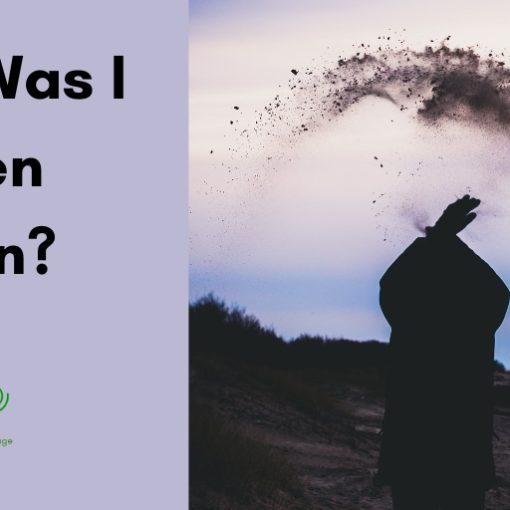We don’ want to be like a barren fig tree, but something has to change. Therefore, we submit to the wisdom of a master gardener.
As a gardener, I often go to people’s gardens, and they ask me why a particular fruit tree is not producing fruit.
I look over the tree. I may note that it hasn’t been pruned. Other trees may shade over it. There could be thick, heavy weeds surrounding it. Perhaps it hasn’t been given any fertilizer or water. The tree is struggling.
There are often no quick fixes.
Often, painful work, as such, is needed for the tree to be fruitful. Pruning, severing connections, reliances. What’s needed to bring this tree into fruitfulness may seem extremely harsh.
Will the owner let the gardener have their way? I can be quite destructive with a spade and some secateurs! But I have a compelling vision of fruit. Lots of fruit.
Personally, more often than not, I have been disappointed by the fig trees I have cared for. Some of which I have planted myself.
The tree grows and flourishes and might even produce a few figs, but nothing really significant for the space it takes up in the garden.
Perhaps I need to be harsher in my care. Not because I don’t like the tree, but so it will produce what it was always meant to.
A barren fig tree can be turned around with time, patience, and care.
Barren Fig Tree.
Jesus loves to tell parables to explain some particular point. Stories have an amazing way of working in our brain to explain some wisdom we need. They help us connect the dots as such.
Then he told this parable: ‘A man had a fig tree planted in his vineyard; and he came looking for fruit on it and found none.
So he said to the gardener, “See here! For three years I have come looking for fruit on this fig tree, and still I find none. Cut it down! Why should it be wasting the soil?”
He replied, “Sir, let it alone for one more year, until I dig round it and put manure on it.
If it bears fruit next year, well and good; but if not, you can cut it down.”’ Luke 13:6-9
Listen to this passage read as a Lectio Divina.
To begin, we need to note who is the first person mentioned in the parable. I was told once that parables should always be read in the sense of the parable being about the first person mentioned in the story. Parables also speak to the relationships on display.
So in this parable, the first person we come across is the owner of the vineyard, and the relationship is that which he has with a barren fig tree. He keeps coming to the tree looking for fruit, yet it is barren—nothing to show but leaves and branches for all the years of its existence.
He is ready to get rid of it. Why should he keep tolerating this unfruitful tree in his vineyard?
The gardener comes and makes some suggestions.
“Sir, let it alone for one more year, until I dig round it and put manure on it.
If it bears fruit next year, well and good; but if not, you can cut it down.”
Fig Knowledge
As a child, I remember a very productive fig tree on our farm. It was situated on some hard limestone rock. The tree itself wasn’t very big, but it always had large crops.
I have also been told about how figs need root restriction.
Growing figs in fertile soil, where all the roots can spread far and wide, will lead to lots of vegetative leafy growth and very little fruit. To get fruit, the fig tree needs to do it hard.
Here is some advice from a gardening website.
It’s thought that figs do best when their roots are slightly restricted. If you’re planting your tree in the ground, dig a planting hole, and then part fill it with well-rotted manure and rubble, to help restrict roots.
If you have them, use paving slabs to make a wall around the roots to further restrict them. Back-fill with compost and firm into place. How to grow figs
So the gardener desires to ‘dig around’ the barren fig tree. I don’t believe this was weeding, more so the gardener may well have been digging a trench or some sharp spade slits around the tree cutting some of the roots. He was forcing hardship on the plant.
Restriction leads to reproduction.
I often see this in other plants too. If a plant has lots of food and water, it will just keep on producing leaves, but when it faces some sort of hardship, it, in a sense, says, ‘Life is hard, I better reproduce in case I die.’
This wise gardener knows what the Fig needs. Both restriction and food (manure).
For your mental health
Let the gardener do their work.
As a gardener, I get lots of suggestions about how to do my job.
Sometimes it’s good advice from the owner, but at other times it’s obvious they don’t know what they don’t know. With many years of gardening experience, I can offer suggestions.
Prune here, wait till next season, add this fertilizer, water -not enough, too much.
For the Fig tree and the restricting of its roots, it might seem to go against everything you thought was right. Digging and cutting roots. Making it hard on the tree. Restricting it. But it is what this tree needs.
I love the resurrection story where Jesus appeared to Mary, and she ‘mistook him as the gardener.’
Jesus said to her, “Woman, why are you weeping? Whom are you looking for?” Supposing him to be the gardener, she said to him, “Sir, if you have carried him away, tell me where you have laid him, and I will take him away.”
In art, this has been captured as Jesus holding gardening tools such as a spade or a hoe.

Read an article She mistook him for the gardener
Some of the ways of the resurrected gardener may seem harsh and unusual, but the gardener has a compelling vision of the fruit tree being abundant for the owner to enjoy.
We submit ourselves as Fig trees to the master gardener.
He disciplines us for our good, in order that we may share his holiness.
Now, discipline always seems painful rather than pleasant at the time,
but later it yields the peaceful fruit of righteousness to those who have been trained by it. Hebrews 12:10-12
Quotes to consider
- The moment God is figured out with nice neat lines and definitions, we are no longer dealing with God.
- Spiritual transformation is an active process of letting go, living in the confusing dark space for a while, and allowing yourself to be spit up on a new and unexpected shore [think Jonah]. Richard Rohr
- Grace shows up when logic breaks down. Richard Rohr
- When you stand before Me [God] in mystery, you will eventually rest within Me in trust. When you can’t figure Me out, you will give up the illusion of predictability and control and discover the joy of freedom and hope. Larry Crabb
- It is so difficult to admit to ourselves and others that we can’t control everything. Only when we name the ways we are powerless do we create space for God to step in. Richard Rohr
- Spiritual growth begins with the easily overlooked disciplines of attentiveness and surrender. David Benner
Questions to answer
- What is it like to be pruned at the very roots of our existence?
- God has a compelling vision for you of fruitfulness. What does that look like for you?
- As you meditate on Christ being a gardener, what does he want to cultivate in you?
Further reading
Barry Pearman
Photo by Craig Whitehead on Unsplash





